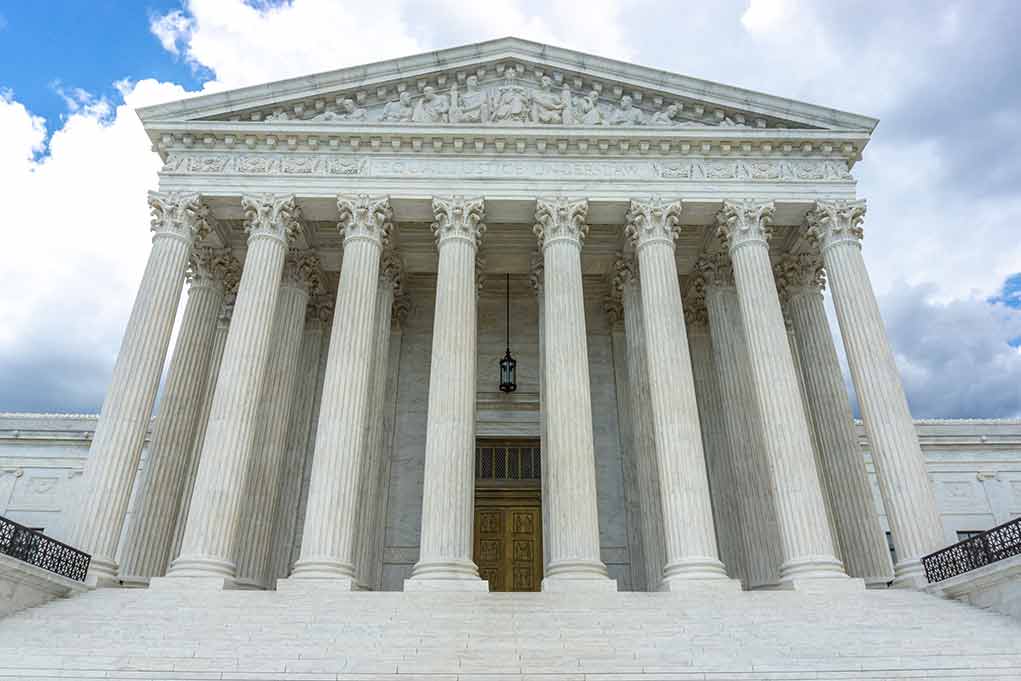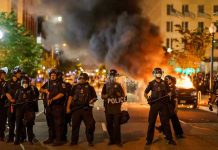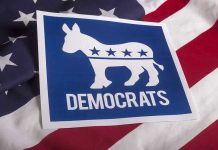
Supreme Court hands President Trump a decisive victory in the battle for executive authority, allowing him to fire heads of independent labor agencies and potentially reshape how Washington’s bureaucracy functions.
Key Takeaways
- The Supreme Court’s conservative majority (6-3) backed President Trump’s authority to remove heads of executive branch agencies without cause, including labor board leaders.
- The ruling overturns a lower court decision that had tried to force reinstatement of fired officials from the National Labor Relations Board and Merit Systems Protection Board.
- Liberal justices warned this unprecedented move could undermine agency independence, with Justice Kagan noting no president since the 1950s has attempted such removals without legitimate reason.
- The Court specifically excluded the Federal Reserve from this ruling, describing it as a “uniquely structured, quasi-private entity” with different historical traditions.
- The case represents a significant expansion of presidential power that conservatives have long advocated for, potentially allowing Trump to reshape the administrative state.
Presidential Power Reasserted Over Administrative Agencies
In a landmark decision reinforcing executive authority, the Supreme Court has upheld President Trump’s right to dismiss leaders of independent labor agencies without cause. The 6-3 ruling, split along ideological lines, allowed the removal of Gwynne Wilcox from the National Labor Relations Board and Cathy Harris from the Merit Systems Protection Board to stand while the case continued through lower courts. This decision effectively pauses a lower court ruling that had ordered these officials reinstated, marking a significant victory for the Trump administration’s efforts to assert control over the federal bureaucracy.
The case centers on a fundamental question about the limits of presidential power versus the independence of federal agencies established by Congress. For decades, many federal agencies have operated with leadership protected from arbitrary dismissal, based on the 1935 Supreme Court decision in Humphrey’s Executor, which held that presidents cannot fire independent board members without cause. President Trump’s actions directly challenged this longstanding precedent, arguing that such limitations unconstitutionally restrict executive authority guaranteed by Article II of the Constitution.
Liberal Justices Sound Alarm Over Agency Independence
The Court’s three liberal justices strongly dissented from the majority opinion, with Justice Elena Kagan delivering a particularly pointed critique. She emphasized the unprecedented nature of the president’s actions and warned about potential consequences for the administrative state that has existed for nearly a century. The removal of these officials has already impacted agency operations, as both boards now lack sufficient members to make final decisions on important labor and civil service matters, creating a functional paralysis that serves the administration’s deregulatory goals.
“Not since the 1950s (or even before) has a President, without a legitimate reason, tried to remove an officer from a classic independent agency,” said Justice Elena Kagan, wrote in her dissent.
Kagan further criticized the majority for favoring presidential power over established precedent without the normal judicial process: “Today’s order favors the President over our precedent; and it does so unrestrained by the rules of briefing and argument — and the passage of time — needed to discipline our decision-making. I would deny the President’s application. I would do so based on the will of Congress, this Court’s seminal decision approving independent agencies’ for-cause protections, and the ensuing 90 years of this Nation’s history.”
Federal Reserve Carve-Out Signals Limits to Presidential Authority
In a notable clarification, the Court’s conservative majority specifically excluded the Federal Reserve from the scope of this ruling. This carve-out addresses concerns that President Trump might attempt to fire Federal Reserve Chair Jerome Powell, whom he has criticized over interest rate policies. The majority opinion emphasized that “The Federal Reserve is a uniquely structured, quasi-private entity that follows in the distinct historical tradition of the First and Second Banks of the United States.” This distinction suggests that while the Court is willing to expand presidential authority over traditional executive agencies, it recognizes limits when it comes to the central bank.
The Court’s unsigned order stated that “The Government faces greater risk of harm from an order allowing a removed officer to continue exercising the executive power than a wrongfully removed officer faces from being unable to perform her statutory duty.”
This rationale prioritizes executive authority over individual officers’ interests, reflecting the conservative justices’ broader view that the Constitution establishes a unitary executive with comprehensive control over the administrative state.
Implications for Trump’s Administrative Agenda
This ruling represents a significant victory for President Trump’s efforts to reshape the federal bureaucracy and reduce regulatory burdens on businesses. By removing Obama-era appointees from key labor agencies without naming replacements, the administration has effectively paralyzed bodies that conservatives have long criticized for promoting pro-union policies. The NLRB, which resolves thousands of unfair labor practice cases annually, and the Merit Systems Protection Board, which reviews federal worker disputes, now lack a quorum to make final decisions on important matters affecting workers and employers nationwide.
“Termination cannot come fast enough,” said President Donald Trump, has stated regarding his views on bureaucrats he believes are impeding his agenda.
While this ruling represents a temporary victory that allows the firings to stand while litigation continues, it signals the Court’s potential willingness to overturn or significantly narrow Humphrey’s Executor when the case is fully argued. Such a decision would fundamentally alter the relationship between the presidency and dozens of independent agencies created since the New Deal era, potentially giving President Trump unprecedented authority to reshape federal regulation across healthcare, financial services, consumer protection, and other sectors that impact everyday Americans.

















